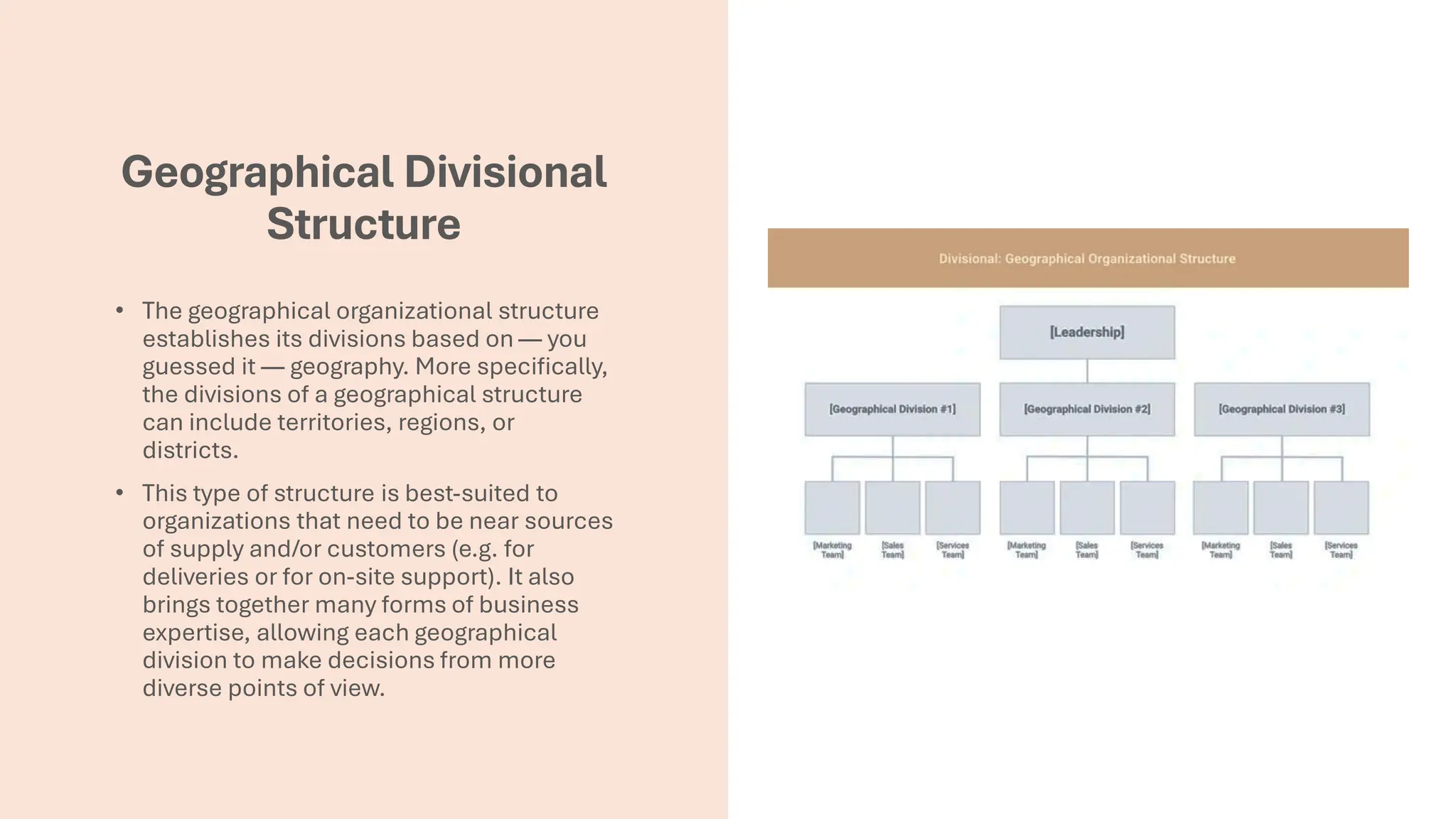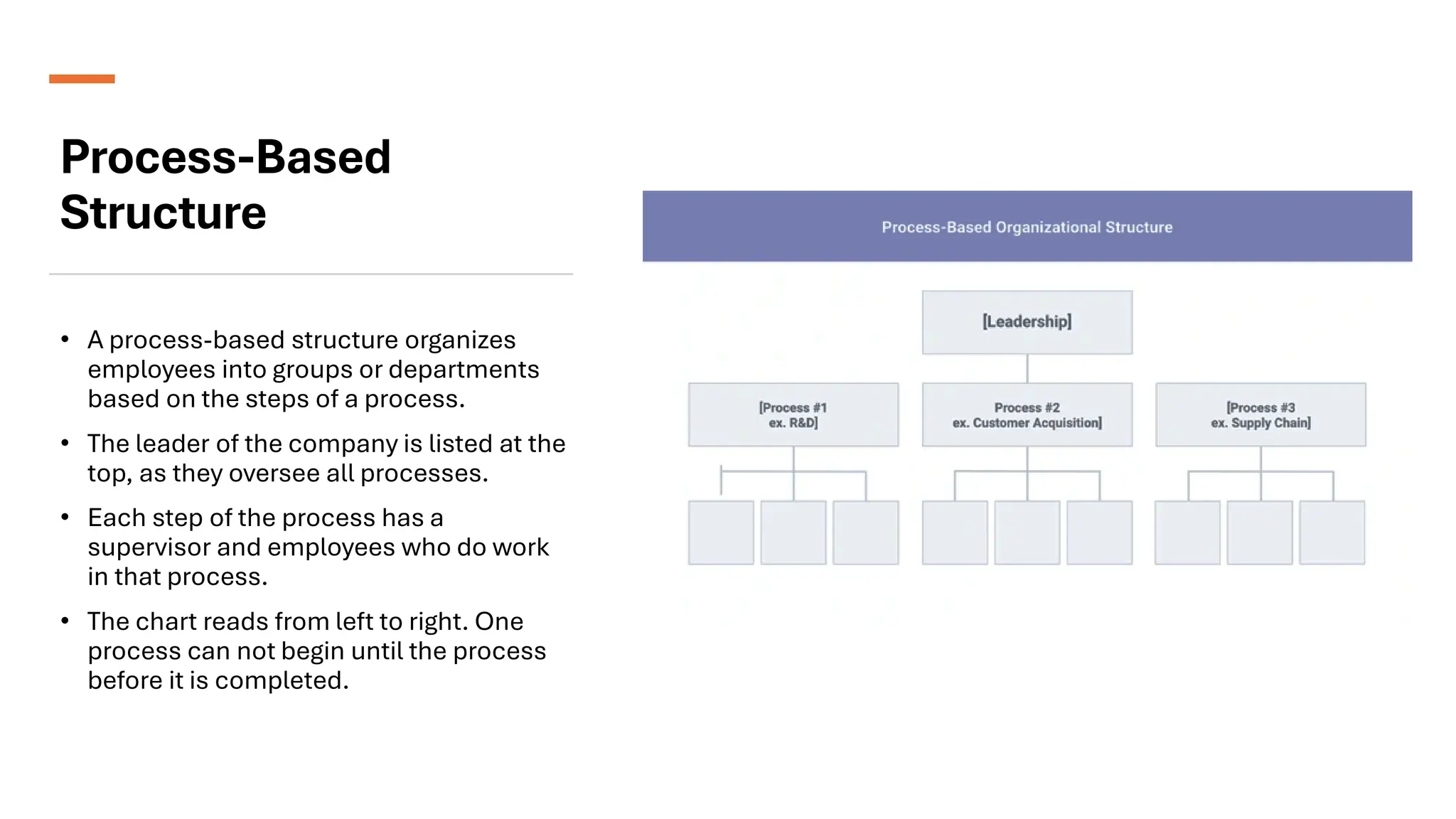The document outlines the importance of organizational structure in businesses, detailing various models and structures, such as hierarchical, flat, functional, divisional, and matrix. It highlights the roles, responsibilities, and decision-making frameworks essential for efficient operation, along with the historical evolution of these models. Additionally, the text emphasizes the benefits of clearly defined structures, including accountability, clarity in job expectations, and improved collaboration among teams.











































